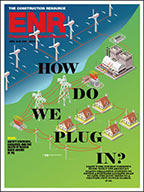 |
| Committed. Nuclear power will remain key part of fuel mix. (Photo courtesy oif Ontario Power Authority) |
In a report issued Dec. 9, Ontario Power Authority laid out its general plan on how its infrastructure and transmission system will be expanded over the next 20 years. Called The Supply Mix Advice Report, the provincial utility recommends that nuclear power generation remain stable at a rate accommodating 50% of the provinces demand. Ontarios nuclear powerplants are approaching the end of their design life and installed capacity could drop from nearly 12,000 MW in 2006 to below 1,000 MW in 2025 unless new generating stations are built or existing plants upgraded, says the report.
 |
This is a recognition of the important role nuclear power will have to play, says Steve Cannon, a spokesman for Bruce Power, the operator of the power station in Tiverton. The report coincides with Bruce Powers upgrade to its 750-MW Bruce A station.
Although natural gas remains costly as a fuel source, the report supports a smart gas approach that would rely on natural-gas-fired powerplants only for peaking power. Another 1,000 MW should remain available to alleviate transmission bottlenecks.
The report confirms earlier decisions to shut down provincial coal-fired powerplants, which now account for 21% of the Ontarios installed capacity, and replace them with renewables like wind and small hydroelectric projects. The report notes that 95% of Ontarios potential wind power sites are located beyond the existing transmission grid. But it claims that 5,000 MW of wind-generated electricity could come on line by 2025 with modest transmission modifications to the provincial grid.
The report does not explore specific site options nor timeframes for construction of new infrastructure. It is the first phase of development of an Integrated Power System Plan to be formulated by next summer. The plan will require approval of the Ontario Energy Board.
ntario remains committed to nuclear power as a key part of its mix of electric generating technologies and plans to tap more renewable sources to replace its coal-fired powerplants.

